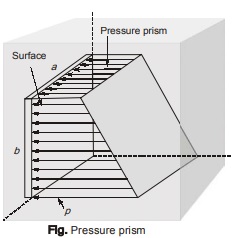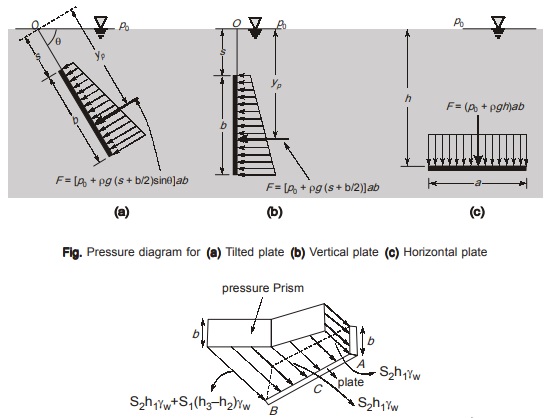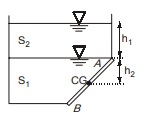Pressure Diagram or Prism
- A pressure diagram or prism is a graphical representation of the variation of pressure intensity over a plane
 surface.
surface. - Total hydrostatic force as well as centre of pressure for a plane surface can be determined by drawing a pressure diagram.
- Net force on plate is equal to volume of the pressure prism.
- Point of application of resultant force is at centre of gravity (C.G.) of the prism projected on the plate.
- It can be drawn for a plane surface in any orientation.
NOTE: Pressure diagram approach is useful when the section is rectangular or square.

If the plate is completely submerged in one liquid only (even if there is other type of liquid present above the plate), the pressure force on plate will be simply, pressure at the CG of plate multiplied by area of plate.
the pressure force on plate will be simply, pressure at the CG of plate multiplied by area of plate.
Force on AC = Pressure at the C.G. of AC multiplied by area of AC
Force on CB = Pressure at the C.G. of CB multiplied by area of C.B.
Point of application of resultant force can be calculated as the C.G. of pressure prism on AB projected on AB.
Force on Plate AB = (S2γwh1 + S1γwh2)A,
A = Area of plate
<< Previous | Next >>
Must Read: What is Fluid Mechanics?

